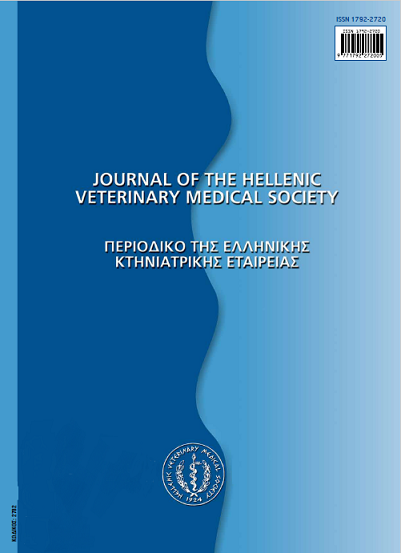Acute tracheal narrowing presumptively associated with anticoagulant rodenticide intoxication in a dog

Abstract
A 3.5-year-old, spayed female, German shepherd-cross dog was presented with cough, hemoptysis, inspiratory stridor and fascial plane hematomas. Routine bleeding profile showed prolonged prothrombin time (PT) and partial thromboplastin time (PTT). Radiography revealed severe narrowing of tracheal lumen accompanied by increased thickness and opacity of its wall. Tracheal diameter was measured objectively, employing the ratio of its diameter (TD) to thoracic inlet distance (TI) and that of the midpoint between thoracic inlet and the carina (TT) to the 3r d rib width (3R), as well as the ratio of TT to predicted diameter of tracheal lumen [DPred (DPred cm = 0.47 (weight kg )0 3 9)]. All three ratios were found lower than normal. The space occupying effect of extensive and severe sub-mucosal hemorrhage due to anticoagulant rodenticide intoxication was incriminated.
Article Details
- How to Cite
-
PARDALI (Δ.Σ. ΠΑΡΔΑΛΗ) D. S., ADΑMAMA-MORAITOU (Κ.Κ. ΑΔΑΜΑΜΑ-ΩΡΑΪΤΟΥ) K. K., PATSIKAS (Μ.Ν. ΠΑΤΣΙΚΑΣ) M. N., & KOUTINAS (Α.Φ. ΚΟΥΤΙΝΑΣ) A. F. (2017). Acute tracheal narrowing presumptively associated with anticoagulant rodenticide intoxication in a dog. Journal of the Hellenic Veterinary Medical Society, 62(3), 235–239. https://doi.org/10.12681/jhvms.14855
- Issue
- Vol. 62 No. 3 (2011)
- Section
- Short Communication
Authors who publish with this journal agree to the following terms:
· Authors retain copyright and grant the journal right of first publication with the work simultaneously licensed under a Creative Commons Attribution Non-Commercial License that allows others to share the work with an acknowledgement of the work's authorship and initial publication in this journal.
· Authors are able to enter into separate, additional contractual arrangements for the non-exclusive distribution of the journal's published version of the work (e.g. post it to an institutional repository or publish it in a book), with an acknowledgement of its initial publication in this journal.
· Authors are permitted and encouraged to post their work online (preferably in institutional repositories or on their website) prior to and during the submission process, as it can lead to productive exchanges, as well as earlier and greater citation of published work.










